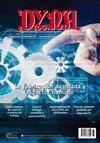EXPLORING ADDITIVES TO ENHANCE FERMENTATIVE BIOHYDROGEN PRODUCTION
IF 0.7
4区 工程技术
Q3 ENGINEERING, MULTIDISCIPLINARY
引用次数: 0
Abstract
Dark fermentation appears as a promising strategy in the new energy landscape, as it enables the production of biohydrogen using a wide range of biomass substrates, thus also contributing to waste management. However, this process exhibits lower yields compared to conventional thermochemical processes for H2 production, such as reforming. To overcome this limitation, the use of additives has been explored to enhance microbial activity and increase dark fermentation yields. However, the application of additives remains limited in practice. This study aims to address this gap by examining the effects of three types of additives (zero-valent iron, activated carbon, and hydrochar) on dark fermentation and hydrogen generation. The results reveal that hydrochar shows the most promising outcomes, increasing H2 production by 20.3%, with the highest biohydrogen yield at 92 mLH2/g-glucose. Volatile fatty acid analysis reveals that butyric and acetic pathways are utilized for H2 production in this case. It is also important to consider the alkalinity of the feedstock, as high levels can increase the pH in the medium and promote methane (CH4) production as the main fermentation product instead of H2. When this occurs, Fe(0) NPs appear to be the additive that most favors methane generation, resulting in a 6.1% higher production compared to the control experiment. This confirms the interest in the use of certain additives in fermentative processes. Keywords: Activated carbon, Addition, Dark fermentation, Fe(0) nanoparticles, Green hydrogen, Hydrochar, VFA.探索提高发酵产氢的添加剂
暗发酵在新能源领域似乎是一种很有前途的策略,因为它可以使用广泛的生物质基质生产生物氢,从而也有助于废物管理。然而,与重整等传统热化学制氢工艺相比,该工艺的产率较低。为了克服这一限制,已经探索了使用添加剂来提高微生物活性和增加暗发酵产量。然而,添加剂在实际中的应用仍然有限。本研究旨在通过研究三种类型的添加剂(零价铁、活性炭和碳氢化合物)对暗发酵和产氢的影响来解决这一空白。结果表明,氢炭的产氢率提高了20.3%,最高产氢率为92 mLH2/g-葡萄糖。挥发性脂肪酸分析表明,在这种情况下,丁酸和乙酸途径被用于H2的生产。考虑原料的碱度也很重要,因为高水平的碱度可以提高培养基的pH值,促进甲烷(CH4)的产生,而不是H2。当这种情况发生时,Fe(0) NPs似乎是最有利于甲烷生成的添加剂,与对照实验相比,产量提高了6.1%。这证实了在发酵过程中使用某些添加剂的兴趣。关键词:活性炭,加成,暗发酵,Fe(0)纳米颗粒,绿氢,氢炭,VFA
本文章由计算机程序翻译,如有差异,请以英文原文为准。
求助全文
约1分钟内获得全文
求助全文
来源期刊

Dyna
工程技术-工程:综合
CiteScore
1.00
自引率
10.00%
发文量
131
审稿时长
6-12 weeks
期刊介绍:
Founded in 1926, DYNA is one of the journal of general engineering most influential and prestigious in the world, as it recognizes Clarivate Analytics.
Included in Science Citation Index Expanded, its impact factor is published every year in Journal Citations Reports (JCR).
It is the Official Body for Science and Technology of the Spanish Federation of Regional Associations of Engineers (FAIIE).
Scientific journal agreed with AEIM (Spanish Association of Mechanical Engineering)
In character Scientific-technical, it is the most appropriate way for communication between Multidisciplinary Engineers and for expressing their ideas and experience.
DYNA publishes 6 issues per year: January, March, May, July, September and November.
 求助内容:
求助内容: 应助结果提醒方式:
应助结果提醒方式:


